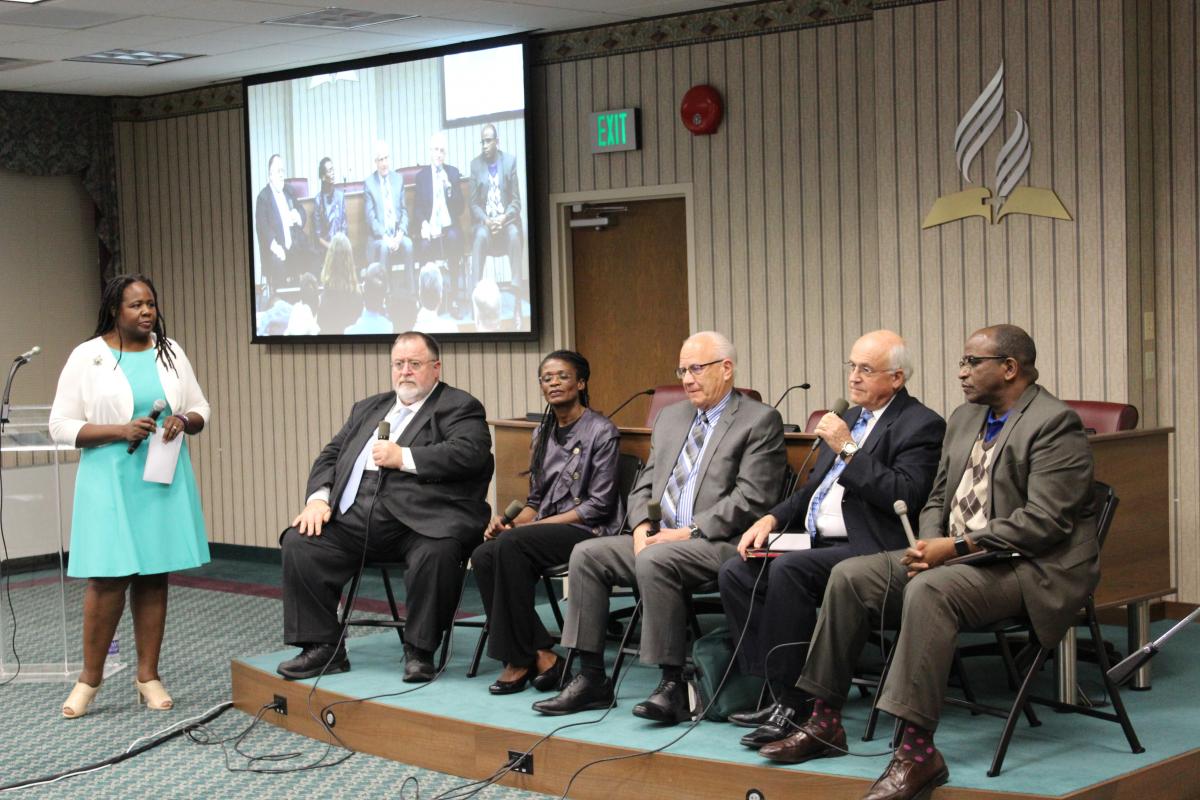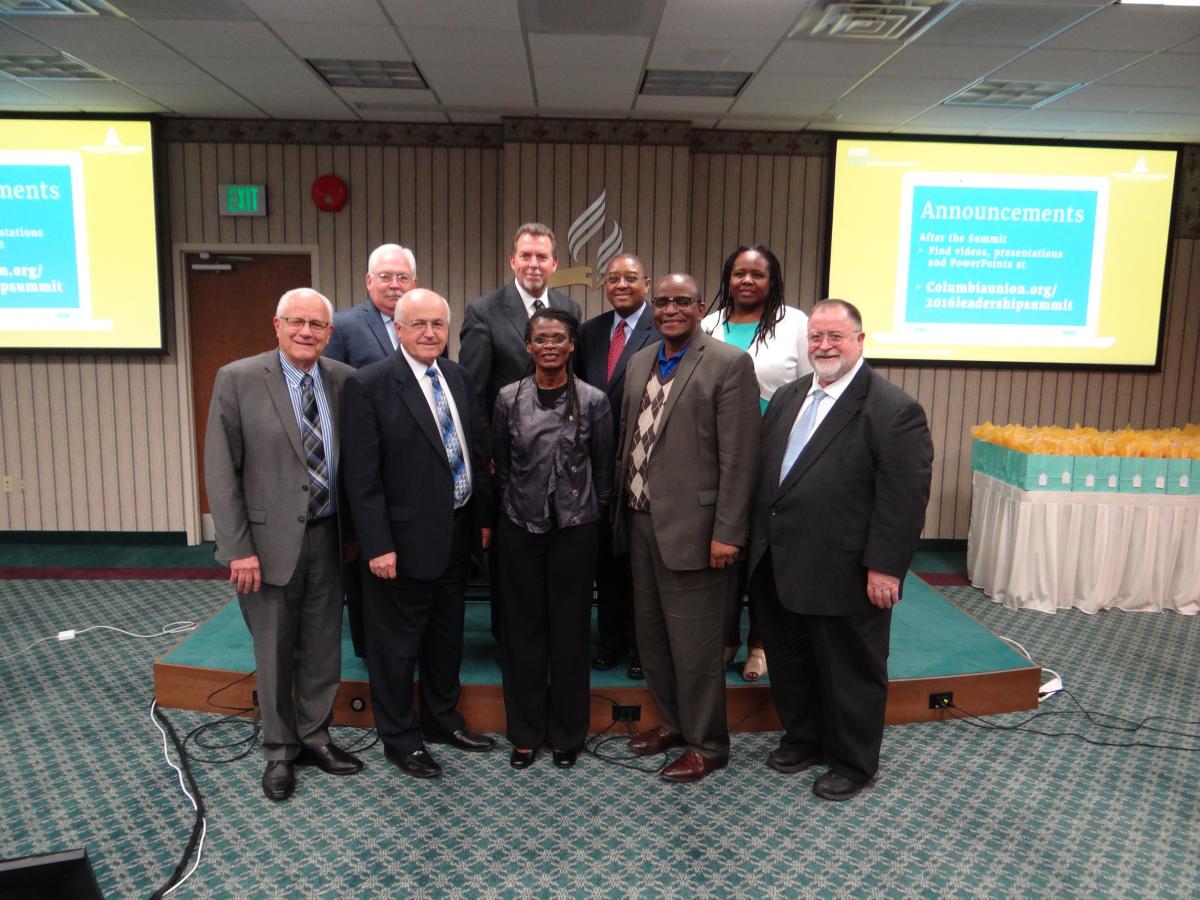
Leadership Summit Focuses on Mission, Organization of Church
Story by V. Michelle Bernard / Photos by Christine Greene
Dennis Jefferson Jr., a student at REACH Columbia Union Urban School of Evangelism, says he couldn’t sit down and tell his brother about Christ, but maybe his brother could be drawn to Christ through a football program at a Seventh-day Adventist university. “We need to be open to meeting people where they are,” he says.
 If Jefferson (left), a 20-year-old member of the Allegheny East Conference’s Miracle City church in Baltimore, could shape the church of the future, he says he wouldn’t totally reshape, but would like to see the church more “people-centered,” focused on the upside down structure, being sensitive to whatever the local needs are.
If Jefferson (left), a 20-year-old member of the Allegheny East Conference’s Miracle City church in Baltimore, could shape the church of the future, he says he wouldn’t totally reshape, but would like to see the church more “people-centered,” focused on the upside down structure, being sensitive to whatever the local needs are.
This weekend Jefferson, 12 of his classmates and 117 Seventh-day Adventist Church, education, healthcare and lay leaders gathered for the 2016 Leadership Summit at the Columbia Union Conference headquarters in Columbia, Md., to discuss the history and future of the church organizational structure.
 “It is an interesting time in the nation and church, and we specifically asked for presentations to be around certain topics—why are we organized, what counsel do we have from the early church leaders, ... and how to move the church forward in mission, message and structure,” said Dave Weigley, Columbia Union president.
“It is an interesting time in the nation and church, and we specifically asked for presentations to be around certain topics—why are we organized, what counsel do we have from the early church leaders, ... and how to move the church forward in mission, message and structure,” said Dave Weigley, Columbia Union president.
During the two-day event presenters George Knight, a church historian, educator and author; Olive Hemmings, a professor at Washington Adventist University in Takoma Park, Md.; Gary Patterson, a retired church administrator; Stan Patterson, a seminary professor at Andrews University (Mich.); and Leslie Pollard, president of Oakwood University (Ala.) presented on how we interpret and apply Scripture and how the church organization can better govern to help fulfill its mission.
Knight outlined the framing and re-framing of the organization starting from the 1850s. “The key word in Adventist organization is mission—how are we going to outreach more effectively.”
 Celeste Ryan Blyden moderates a panel question and answer time with the leadership summit presenters.
Celeste Ryan Blyden moderates a panel question and answer time with the leadership summit presenters.
He went on to share, “We have not got the biblical model figured out, but in order to understand Adventism and some of its problems, we must realize that we reflect the place that we were born.”
Pollard also talked about the importance of flexibility in meeting the needs of different groups. He said Adventist “leaders must agree and affirm the identity and values that are integral to Seventh-day Adventist mission in a variety of contexts. Values transcend time and culture.”
According to Celeste Ryan Blyden, vice president for communication and public relations, who coordinated the event, the union holds a leadership event every five years to engage leaders in dialogue, examine our effectiveness and sharpen the focus on mission.”
Melvin Pascall, a member of Allegheny West Conference's Ephesus church in Columbus, says he enjoyed the opportunity for open discussion on issues members are concerns about. "When we don’t have to be inhibited in discussing [issues], it is good for the church," he adds.
Knight concluded by saying, “My prayer is for the union is that we will maintain the ability to keep open and the courage to move forward. My prayer is that you maintain this sense of openness and you have a part in educating those above and below about the realities about what Adventism stands for.”
 Pictured left: Columbia Union leaders and presenters gather during the 2016 Leadership Summit: (back row: Rob Vandeman; Dave Weigley; Seth Bardu, Columbia Union treasurer; and Celeste Ryan; (front row) George Knight; Gary Patterson; Olive Hemmings; Leslie Pollard and Stan Patterson.
Pictured left: Columbia Union leaders and presenters gather during the 2016 Leadership Summit: (back row: Rob Vandeman; Dave Weigley; Seth Bardu, Columbia Union treasurer; and Celeste Ryan; (front row) George Knight; Gary Patterson; Olive Hemmings; Leslie Pollard and Stan Patterson.

Add new comment